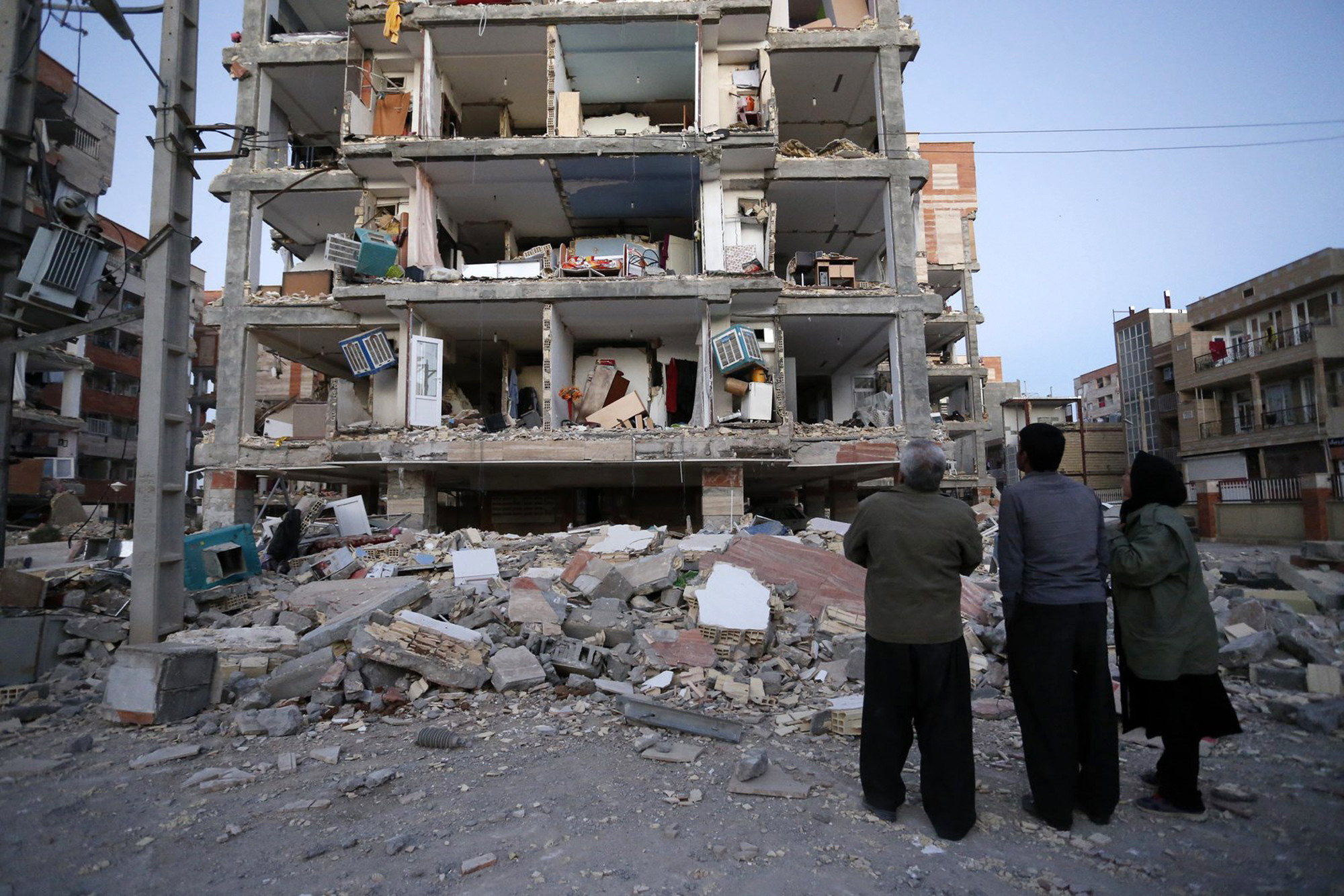Iranian authorities scrambled on Tuesday to bring help to thousands of people left homeless by a major earthquake that killed more than 400 people.
As the country marked a day of mourning, President Hassan Rouhani promised swift help following the 7.3-magnitude quake that struck a mountainous region spanning the Iran-Iraq border late Sunday.
Volunteers also rushed to help the displaced after thousands of homes were destroyed in the quake, which rocked a region extending across Iran’s western province of Kermanshah and neighbouring Iraqi Kurdistan.
On Tuesday afternoon, the damage was visible in the town of Sar-e Pol-e Zahab, Iran’s worst hit in the quake.
Residents helped police to evacuate an elderly man from a home at risk of imminent collapse. His face was covered in caked blood and his hand was bandaged.
Several buildings and houses lay in complete ruins, while others stood disfigured after their facades had collapsed. But other structures appeared unscathed.
A team of rescue workers with sniffer dogs combed the ruins for survivors after at least 280 people were killed in the town of some 85,000.
The town centre was clogged with traffic as people from the surrounding province rushed to help with rescue efforts. Some distributed blankets and others handed out water.
Tents, some provided by the Red Crescent, dotted green spaces turned into camps for the displaced. But some did not have shelter from the cold.
“What we need is a tent and covers to be able to get through the night,” said Shima Maryami Kiani, 24, the mother of a three-year-old.
Earlier in the day, residents who had fled their homes awoke from a second night in the chilly outdoors as authorities struggled to get aid into the quake zone.
Mr. Rouhani was expected to speak with local officials to evaluate the situation, after landing by helicopter in the city of Kermanshah where he promised the government would move swiftly to help those left homeless.
“I want to assure those who are suffering that the government has begun to act with all means at its disposal and is scrambling to resolve this problem as quickly as possible,” he said.
Mr. Rouhani said all aid would be channelled through the Housing Foundation, one of the charitable trusts set up after the Islamic revolution of 1979 that are major players in the Iranian economy.
Pir Hossein Koolivand, the head of national rescue services, earlier said the priority was “to provide solutions for heating, housing and food.”
The head of the elite Revolutionary Guards, Major General Mohammad Ali Jafari, said the immediate need was for tents, water and food.
“Newly constructed buildings … held up well, but the old houses built with earth were totally destroyed,” he told state television as he visited the affected region.
As winter sets in, around 15,500 Iranian homes have been destroyed and another 15,000 damaged in the quake, according to official estimates.
Seven towns and nearly 2,000 villages were damaged, authorities said, and several villages were completely wiped from the map.
The human toll in Iran stood at 432 dead and 7,460 injured, while across the border in more sparsely populated areas of Iraq, the health ministry said eight people had died and several hundred were injured. Iraq’s Red Crescent put the toll at nine dead.
On Tuesday, Iran marked a day of mourning, with a black banner adorning the corner of images of the disaster broadcast by state television to the tune of “Sad Lisa” by British singer Yusuf Islam, formerly known as Cat Stevens.
To show solidarity with the Kurdish-majority province hit by the quake, a state newspaper printed a headline in Kurdish, which read “Iran cries with Kermanshah.”
Ali Daei, a legend of Iranian football and former national team coach, launched an initiative to gather food and basic supplies.
A Tehran cinema said it would donate half of its receipts to relief efforts, and the capital’s two football teams said they were sending hundreds of tents and blankets to affected areas.
The Tabnak agency offered a little hope, with the report that a girl named Avna was born in one of the devastated region’s three hospitals.
On Monday, Iranian officials said they were setting up relief camps for the displaced and that 22,000 tents, 52,000 blankets and tonnes of food and water had been distributed.
Iran sees frequent seismic activity.
In 1990, a 7.4-magnitude quake in northern Iran killed 40,000 people, injured 300,000 and left half a million homeless, reducing dozens of towns and nearly 2,000 villages to rubble.
Thirteen years later, a catastrophic quake flattened swathes of the ancient southeastern Iranian city of Bam, killing at least 31,000.
Iran has experienced at least two major quake disasters since – one in 2005 that killed more than 600 people and another in 2012 that left some 300 dead.


